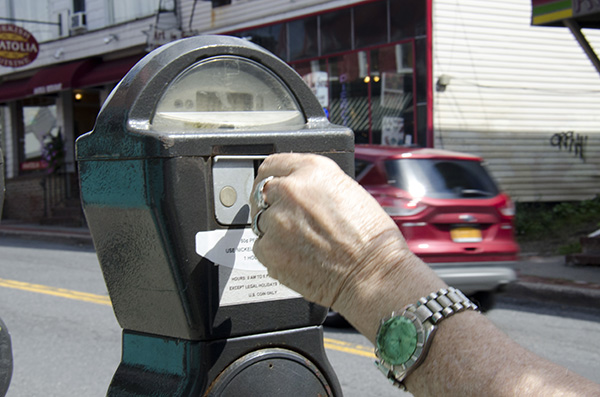

The New Paltz Village Board has begun implementing a Streetscape/Parking Plan that includes increasing parking meter rates to 50 cents per half hour with a one hour parking limit in the Village center, among other changes.
The plan started last year with the idea to close Church Street to car traffic, from Main Street to Academy Road, to create a “pocket park” and pedestrian walkway.
The plan was drafted last year by Amy Cohen and Julie Robbins from the Downtown Business Asscoication, Village Trustees Ariana Basco and Sally Rhoads, and Kathy Moniz from the Building Department.
The proposed Streetscape/Parking Plan was endorsed by the Bicycle and Pedestrian Committee, a joint Town and Village committee that works to improve town and village safety conditions for cyclists and pedestrians.
However, recent changes to meter rates and times were inconsistent with the plan that was proposed last year, but the error was caught by the board and corrected, Robbins, a business owner in the village said.
“The mistake that was put in was the village decided to help the business owners that over the holiday they were going to bag the meters,” Robbins said. “In that wording they used the wording “core district,” which is the main business district in the downtown area, and somehow that wording “core district” got put in place of Main Street when they were making the official changes for the meter.”
Robbins said this mistake is being corrected and a meeting was held last week to inform the village.
The purpose of the plan was to allow people to enjoy their time in the village without having to worry about their parking meter expiring, Robbins said.
“The idea is that when people come into the downtown they want them to have options to eat. So they can eat lunch, and shop and it can be leisurely,” Robbins said. “This gives people a longer time to spend downtown without having to go back and forth to the meters.”
Basco said that this plan wasn’t a topic of discussion by the board initially — it spurred from another topic during a meeting.
“We were really meeting about putting things downtown to help direct people, and through those meetings we started talking about parking,” Basco said. “The intention was not to organize a group and come up with the parking plan. The group was existed and then we came up with this plan.”
Robbins said she sees the error as a positive because it allowed for a more open discussion between the board and the business owners, she said.
The reaction to the plan has been “to change everything back,” Basco said. However, despite their differences in opinion, Basco said that the board and town have been able to work together to try and come to an agreement on the matter.
